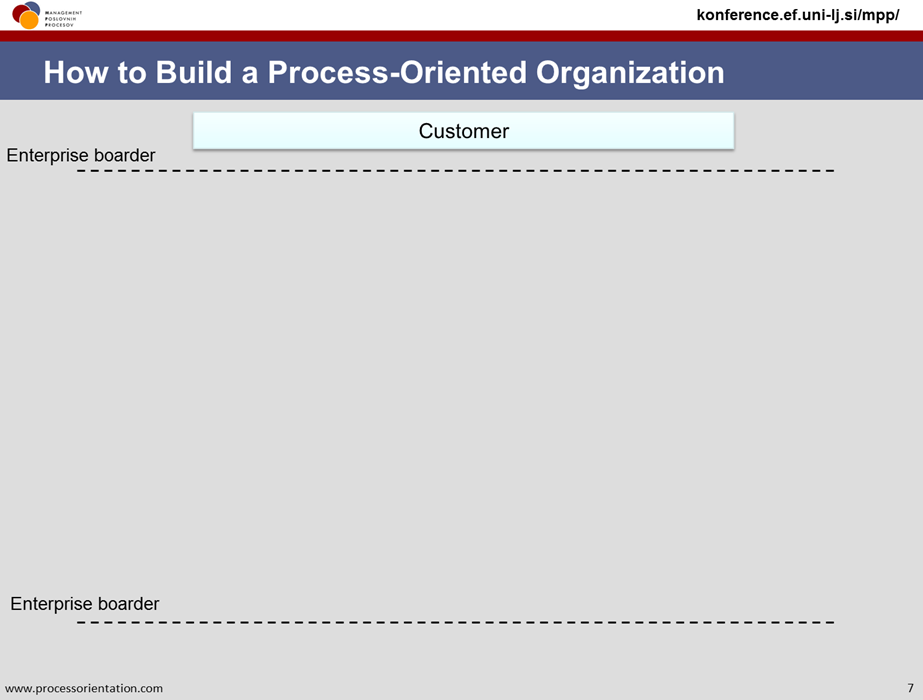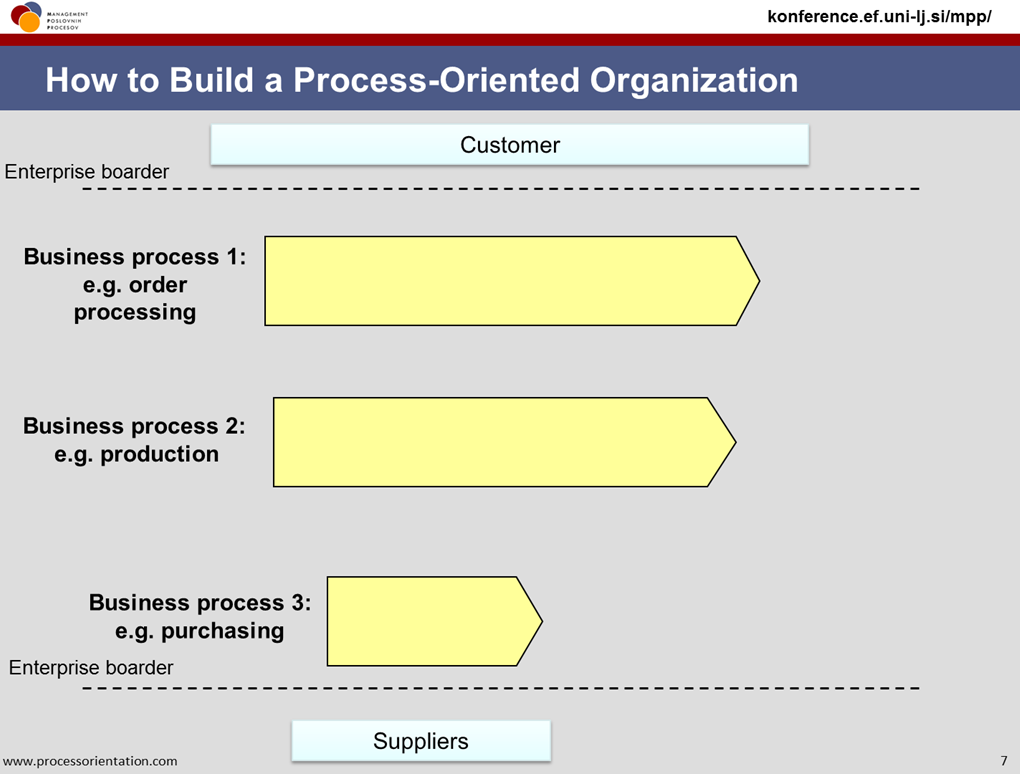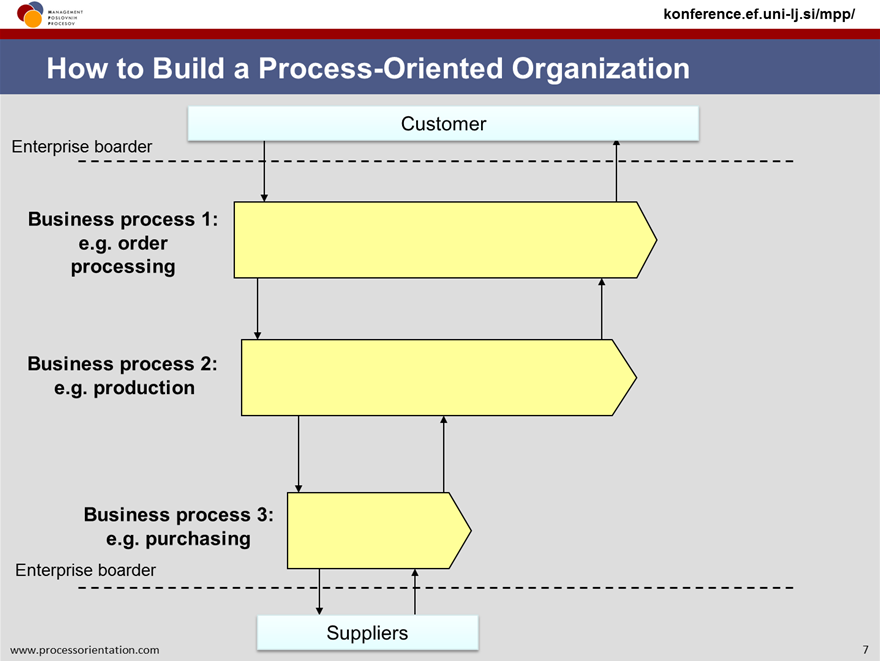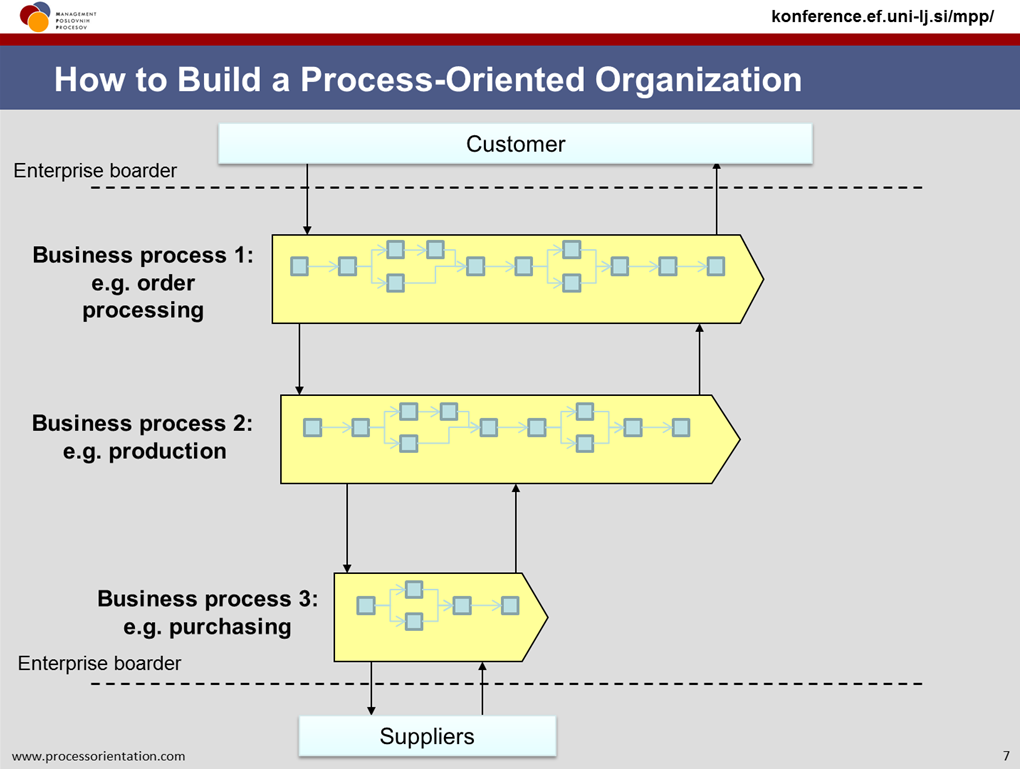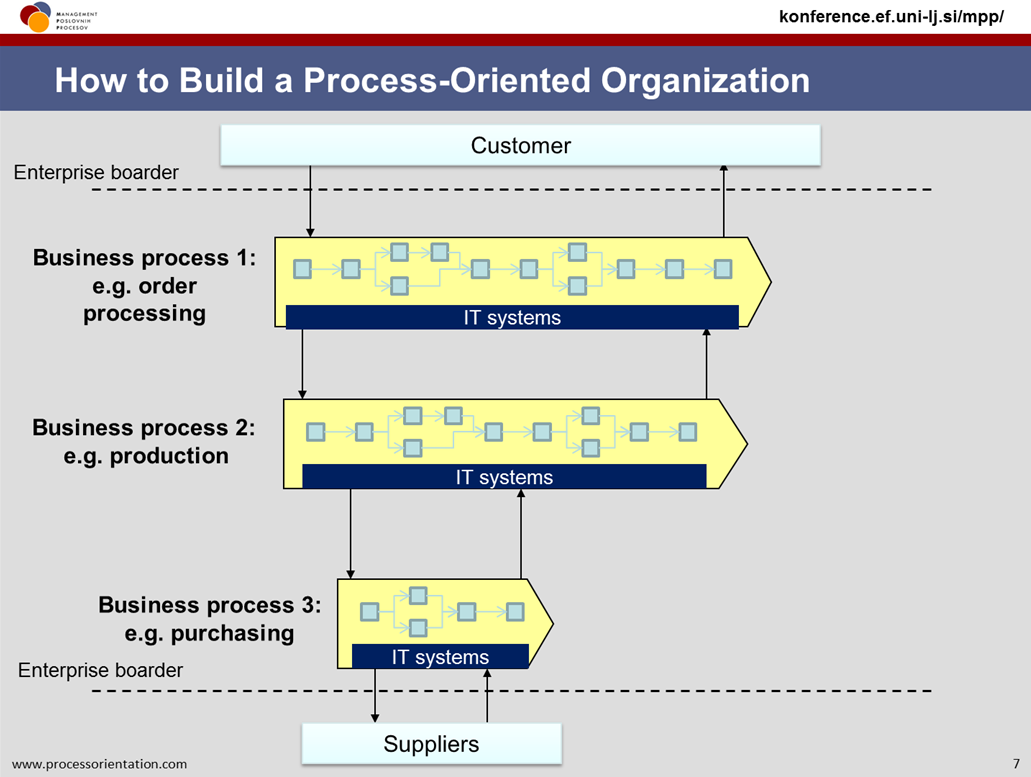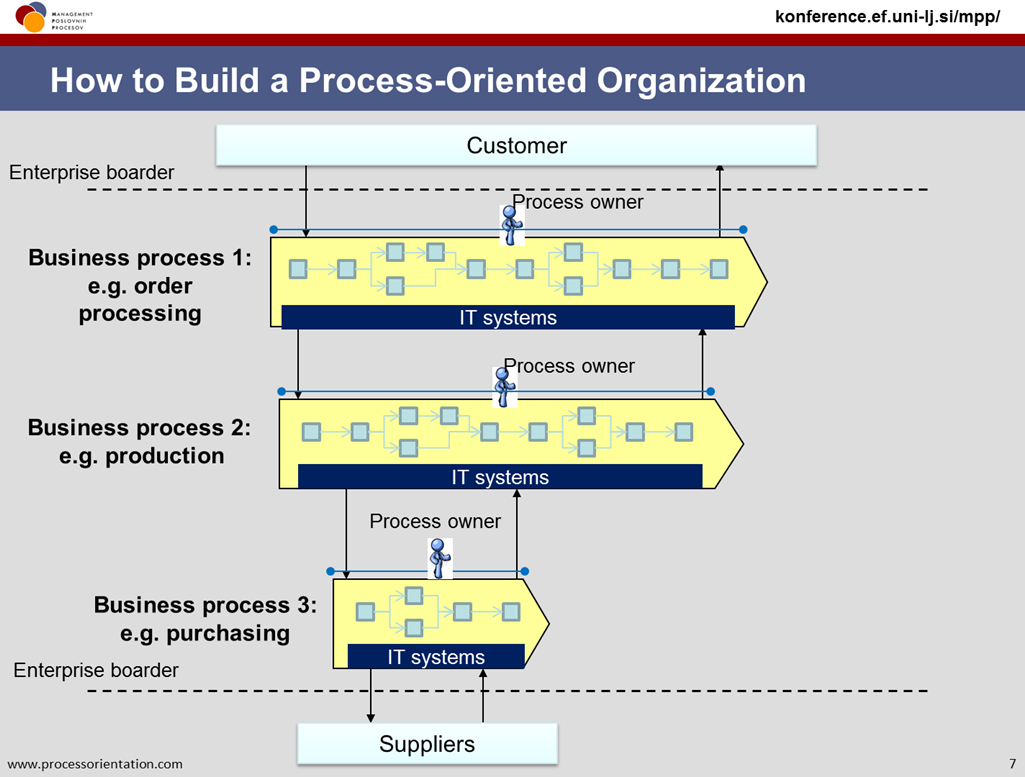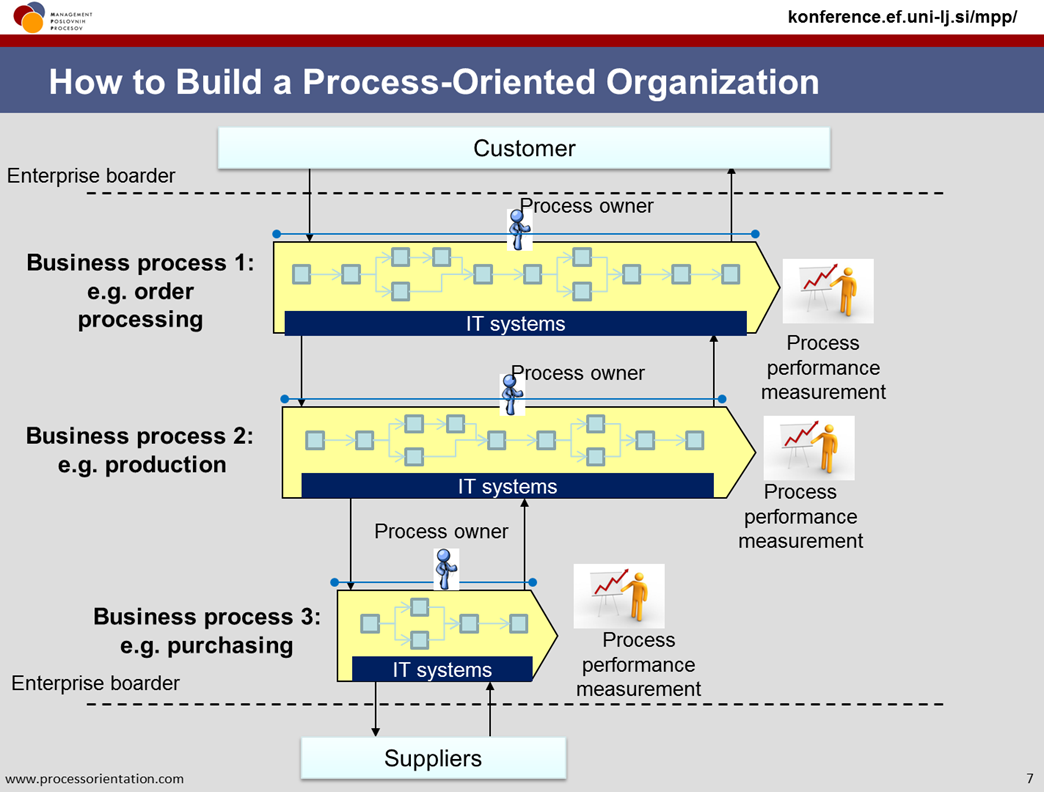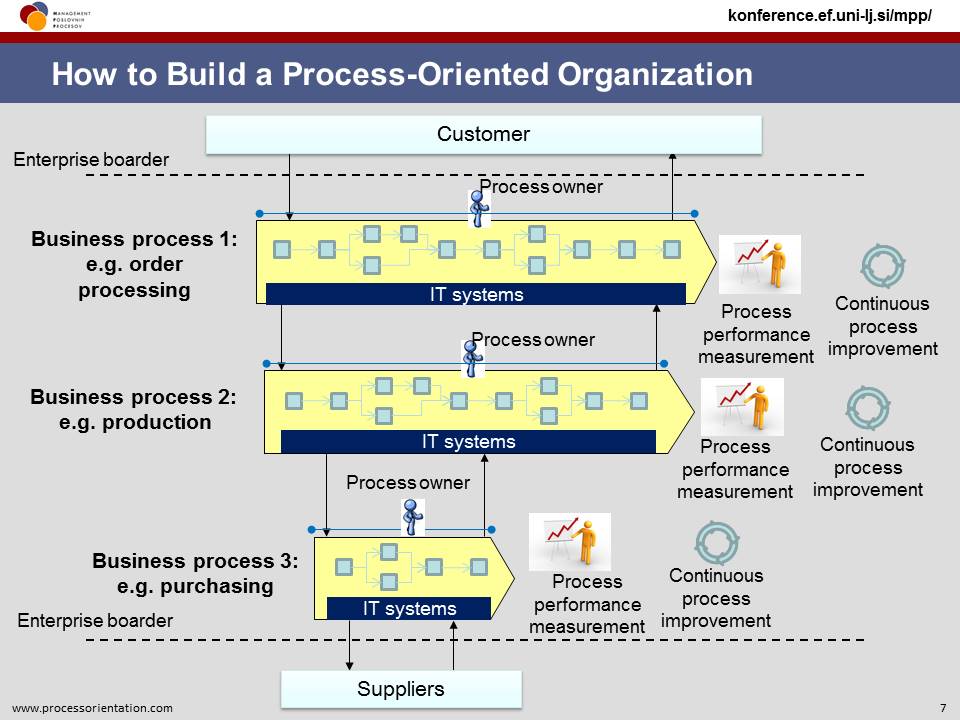The 10th Business Process Management Conference, organized by the University of Ljubljana, Faculty of Economics, took place in Ljubljana, October 14-15, 2015. The keynote speech “Process Management Practices, Organizational Excellence, and Firm Performance” by M. Kohlbacher was about organizational excellence, i.e. how the organization needs to be designed to gain rigoros performance improvements. Buiding on real world examples, it was shown which process management practices should be deployed in practice and how the organization’s business processes have to be designed in order to improve the firm’s key performance indicators. The key building blocks of a process-oriented organization are as follows:
On the top of all endeavors, there is the customer with her needs. Between the customers and the suppliers, there is the enterprise boundary:
Inside the enterprise boundary, the company’s value adding business processes are located:
The overall goal is it to build a customer-oriented organization. So, internal customer orientation is needed, too. In order to implement internal customer orientation, the organization is designed in a way that the business processes relate to each other like customers to suppliers. In its essence, customer-supplier-relationships are built between the organization’s business processes. Every business process has a defined customer and may also have one or more supplying processes. The customer process is ordering, the supplier process is fulfilling the order and supplies the result back to the ordering process:
So far, business processes were considered as black boxes. When the black box is opened, the activities of the business process can be seen (process design of a single business process):
IT-systems are supporting the business processes:
Another important element of process management is the role of the process owner. For every business process, a process owner is defined who is responsible for (i) the design of the process, and (ii) for the performance of the process:
Process performance measurement needs to be in place. This is done by developing key performance indicators (KPIs) for the business processes. Process performance indicators are metrics which numerically capture the performance of a business process. It is important that the KPIs are derived from business strategy and internal/external customer requirements:
Having KPIs in place, process performance can be measured and processes can be continuously improved (continuous process improvement):
In summary, the performance of the firm can be significantly improvement through building a process-oriented organization by using the following main concepts:
- customer-supplier relationships between the business processes
- process owners
- process performance measurement, and
- continuous process improvement initiatives
